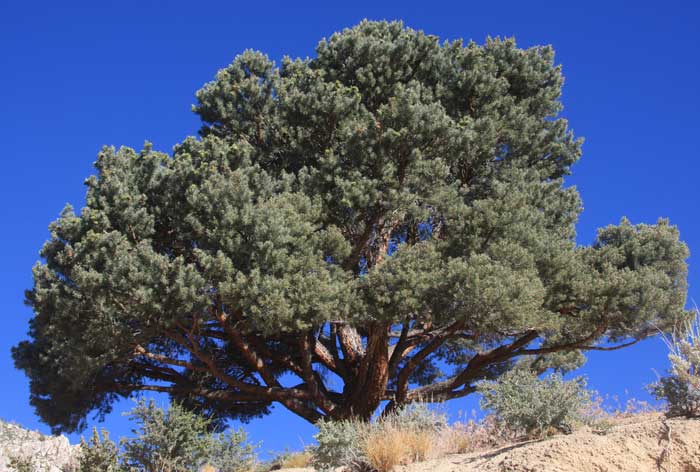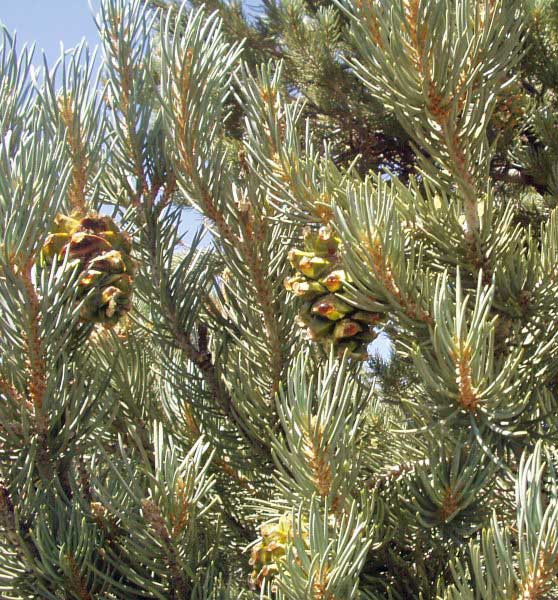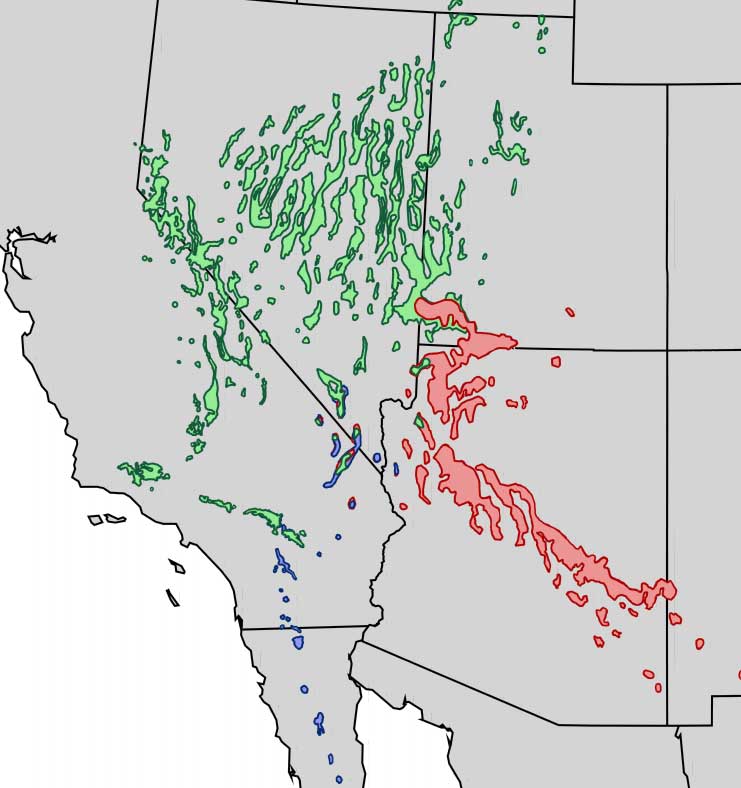Ethnobotany of southern California native plants:
Pinyon Pine (Pinus monophylla)

credit:Dcrjsr CC BY-SA 3.0, via Wikimedia Commons
Pinyon pine looking sharp on a desert mesa.

credit:Toiyab, GFDL
Green, sticky pine cones emerge on this pinyon tree.

Pinyon pine in the winter. The green cones have turned dry and brown.
Pinyon Pine (Pinus monophylla)
Pinyon pines are prominent trees among the woodlands and high elevation biomes throughout the American southwest. There are many species of pinyon pine. The single-leaf pinyon (Pinus monophylla) grows in southern California and was a popular source of food for Native Americans in the region.
Pinyons prefer growing on rocky valley slopes with light precipitation. You can generally find the single leaf pinyon between 3,500 and 7,500 feet in elevation. Along the southern California coast range, Pinus monophylla is most often found growing among Juniper trees and other conifers.
Single leaf pinyon has been known to hybridize with another southern California species, the Parry pinyon pine (Pinus quadrifolia).
Pinyon seeds
Most notably, these trees produce pine cones filled with edible pinyon seeds, or pine nuts. These pine cone seeds were and still are a staple among local Native Americans. The reason for this is simple, these pine nuts taste great on lots of dishes. And, most importantly, they are a rich source of calories, fats and proteins.
The individual seeds in the pinyon pine cone are referred to as pine nuts. The Navajo called them pinons. All species of pine tree are edible, however, only pinyon pines produce seeds large enough to justify the effort required to collect them.
Each pinyon cone produces about 20 seeds. The early settlers soon found that pulling the seeds out of the green, ripe cones was labor intensive. After some experimenting, natives in California figured out a smart method for harvesting these seeds.
Harvesters first knocked the cones off the tree with giant wood poles. At this point, the cones were still green and covered in a sticky pitch resin. The natives then stacked the cones in a big pile and placed rabbit-brush on top of the pile. They lit this pile on fire and let the high heat and flames briefly scorch the pine cones. The purpose of the fire was to burn off the sticky residue and to loosen the seeds from the cones.
Once the resin was singed off, the cones could be handled with ease. Natives knocked on them and the seeds fell out.
The pine nuts could either be eaten raw, cooked as mush or stored for later use.
The Kumeyaay and Cahuilla regarded the single leaf pinyon as an excellent source of food. The Cahuilla fed these pine nuts to their babies as a substitute for breast milk. They also ground up the nuts, mixed the powder with water and served it as a drink.
The Kawaiisu used the pinyon pine medicinally. The pitch from this tree was cooked and administered to woman who didn’t want to conceive more children.
Pine pitch salve was also used as a disinfectant on cuts.
There are anecdotal stories of the Kawaiisu using the pinyon pitch as a means to stop women from menstruating and to keep young girls from aging.

Geographic range of three subspecies of single leaf pinyon pine.
References:
Bean, Lowell John and Katherine Siva Saubel 1972 Temalpakh (From the Earth); Cahuilla Indian Knowledge and Usage of Plants. Banning, CA. Malki Museum Press (p. 102)
Weber, Steven A. and P. David Seaman 1985 Havasupai Habitat: A. F. Whiting’s Ethnography of a Traditional Indian Culture. Tucson. The University of Arizona Press (p. 205)
Please return to our main Ethnobotany of southern California page.
On our main ethnobotany page, we present a clickable list of the southern California native plants that became a part of the culture of Native Americans and early European settlers. These plants were used for medicine, food, shelter, drink, tools and art.
Warning: The information about plants on this website is intended for general educational purposes only. The author of this website accepts no responsibility for problems arising from the user’s misidentification, misuse, or use of plants. Please read the full TERMS associated with this website.
